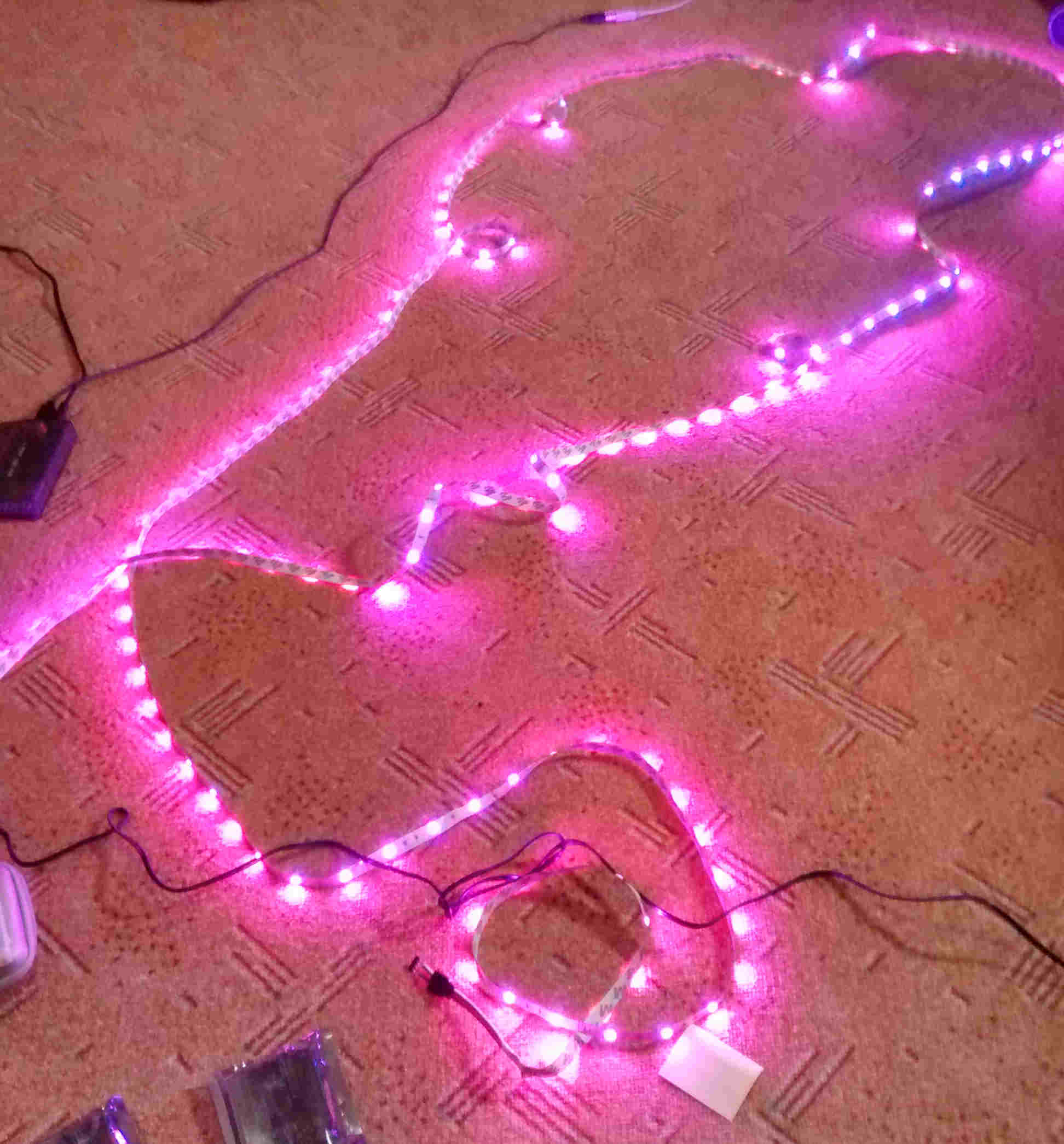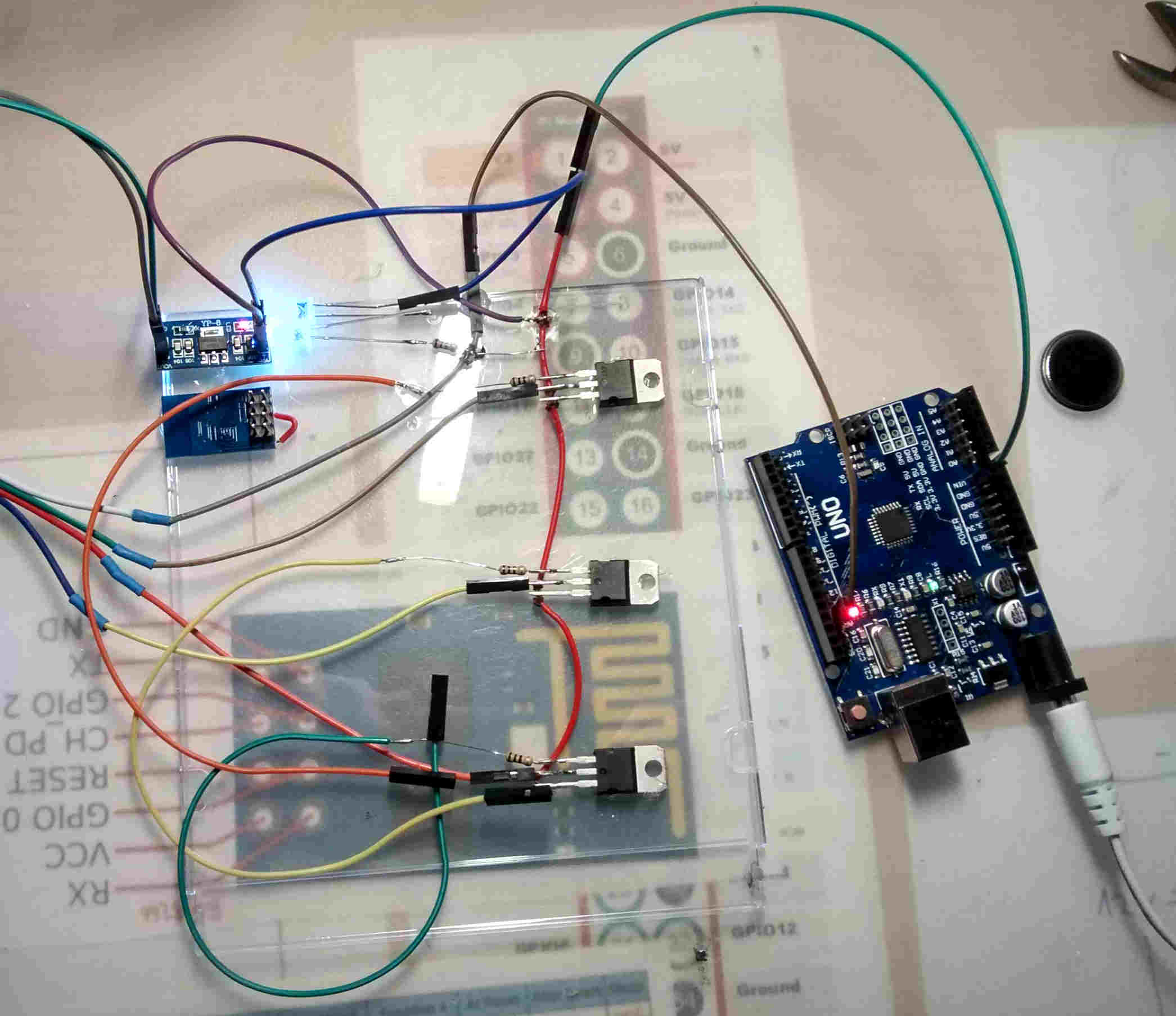LED music visualizer
LED strip controller that changes the color to the beat of the music.

First tests show that the setup seems to work.
The setup consists of cheap RGB LED strips, 2 * 5 meters, powered by two 12V 3.5A adapters and an Arduino with three TO-120 transistors each. For strips with 30 LEDs per meter, you need 0.5A per meter. To be safe, add additional 10% to the total. So for my 10 meters, I could also have used a single adapter with at least 5.5A. The Arduino’s GPIOs are not nearly able to supply 5.5A * 12V = 66W, so we need transistors - either darlington transistors or MOSFETs. Adafruit has more information and detailed explanations. After wiring, the Arduino needs to be flashed with a software that communicates with the Raspberry Pi. I adapted a sketch that implements the Adalight protocol, you can find it here.
The Raspberry Pi as server runs Hyperion which is AmbiLight-like. On the same host, MPD outputs music to speakers and a FIFO. I wrote a Hyperion plugin that processes the output of the FIFO and thus visualizes the music that is currently be played. The plugin and more installation instructions are here. In my case, I started two Hyperion daemons, because I had two Arduinos connected and it is currently not possible to output the same data to two Hyperion compatible devices.
Initially, I planned using an ESP8266 instead of the Arduino. I had not the right parts to step down 12V to 3.3V and tried to hack something together with LEDs and a 7V-3.3V-stepdown converter. Well… that didn’t work out quite well. I used Arduino Unos instead.

Do not reproduce, this fries the ESP…

The controller in use